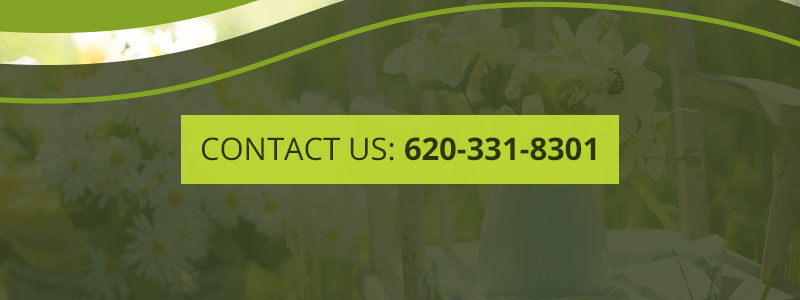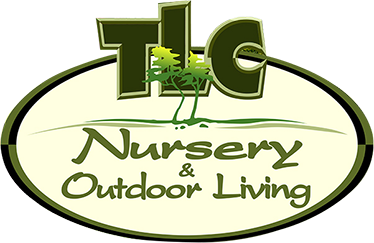If you are an avid gardener or someone who gets great joy from a summer garden full of plants, the fall and winter can be quite drab. However, just because you can’t grow anything outside in the Kansas fall and winter, doesn’t mean you can’t have a garden. There are a number of easy ways to grow plants indoors, and in today’s blog, we at TLC Nursery & Outdoor Living are going to provide you with some indoor gardening tips. Come check out our garden center and plant nursery today for all your indoor gardening needs.
Indoor gardens are not only a great way to bring some green and nature into your home, but they can also be an excellent source of herbs, fruit, and produce. If you have ever had a common household plant or grown aloe vera or basil in a sunny window, you are already likely well acquainted with the indoor gardening basics—water, sunlight, and the occasional dose of fertilizer. To learn more about the process of building an indoor garden, read on.
Find the Space
An indoor garden can be as big or small as you want and your space permits. From a windowsill to an entire room, gardening technology allows us to garden virtually anywhere. If you are wanting to build a large garden you will want to set up a table or bend exclusively for this. Having a defined space will help keep your plants safe and area clean. If possible, pick a spot that is covered in linoleum, tile, or another surface that won’t damage when drops of water rain down, which they will inevitably do.
Set up the Light
Appropriate light is key to the growth of plants. When plants receive light, they are able to photosynthesize and, thus, survive and thrive. If they are not given adequate light, they will grow weak and spindly and possibly die. It’s even possible that they can still grow leaves, while not being able to bear fruit.
During the winter, the light coming in through the windows is often too weak and infrequent to sufficiently nourish your plants. To remedy this you can purchase a grow light. When purchasing your light keep the following tips in mind:
- Buy Proper Bulbs—Regular bulbs will not work. The photoreceptors of plants need light that is the same wavelength as the sun. It is, therefore, necessary to buy a specialized light. There are a variety of bulb options out there, and your selection is dependent upon your plants’ needs and your budget. For example, though cheaper incandescent lamps and fluorescent bulbs will work, they are best for herbs and plants that don’t require a lot of light. Compact fluorescent systems and high-intensity discharge bulbs, on the other hand, can be quite efficient but tend to be on the more expensive side.
- Place Light Close—When setting up your light, you will want to position the light as close as you can to the plant without harming the leaves.
- Monitor Light Exposure—Most vegetable plant will require 14 to 16 hours of light each day. Depending on the health of your plant, you may want to adjust this number. If your plant is not receiving enough light, its stem will be thin, leaves small, and it won’t retain a vibrant color.
Control Temperature
Temperature is crucial to plant growth. One of the great benefits of indoor gardening is having the ability to truly control the temperature. For most plants, a temperature range between 65 – 75 Fahrenheit is most suitable. Try to not let the fluctuation go beyond 10 degrees in either direction. As a general rule, plants that are too hot will appear small and weak. Whereas plants that are too cold will have yellow leaves that may fall off.
 Regulate and Adjust Humidity
Regulate and Adjust Humidity
Keeping your humidity level constant can be challenging—especially in the winter months when the weather and heat tend to create a very dry air. You can identify a humidity problem by looking for the following signs: brown leaf tips, withered leaves, and a loss of leaves
To increase the humidity of your grow room you can:
- Mist plants daily or as often as needed
- Invest in a humidifier
- Place a tray of water near your garden area
- Group plants closer together (this will enhance relative humidity by creating something similar to a microenvironment).
Choose Correct Soil
An ideal soil will stay loose, drain well, and provide plants with the necessary nutrients and water they need. Typically, soil found outside is too heavy and ridden with weeds and insects to be used in indoor gardens. There are a number of organic soil mixtures that are made specifically for the purpose of indoor plants. If you need help locating the right soil or making your own, contact your local garden center. Our garden experts would love to help you out.
Opt for Hydroponics
Rather than finding the right soil for your plants, you could instead try out hydroponics. This type of soil-less gardening delivers the nutrients to plants directly, without requiring the plant to be bound up in soil.
In addition to faster growing time, plants grown using hydroponics also take up less space, are less likely to encounter illnesses, and nutrient sources can be adjusted more easily and accurately.
Pick Your Plants
After you have set up all your equipment and supplies, the last and perhaps most exciting step is to pick the vegetables, fruits, herbs, and/or flowers you want to grow in your garden. Almost anything can be grown indoors—if the space permits.
When planning your garden, keep in mind the option to start your plants indoors and then when the spring or summer planting season arrives transport them outdoors.
If you are in the southeast Kansas area and are looking for a plant nursery with a wide array of vegetables, fruits, herbs, and flowers, look no further than TLC Nursery & Outdoor Living.
Water and fertilize
As with any plant, your indoor plants will also need a regular dose of water and fertilizer. Though it will vary depending on your plant choices, typically plants grown in containers dry out quicker than when grown in full gardens, which means they will require more water. When watering, make sure you use room-temperature water, and don’t let it pool at the bottom of the container. This can cause rot and/or disease.
Bringing in and growing plants indoors is easier than you might think. We hope that after reading this blog you, too, realize this. When you bring your garden indoors you can enhance your decor, freshen up the air, and even improve your mental health—studies show that even having a small patch of green in your indoor space can improve mood and productivity. And if you are planting fruits, vegetables, or herbs, you, of course, get to reap the benefits of fresh and delicious homegrown food.
Need help getting your indoor garden setup? Come by our Independence garden center, and we can make sure you have all you need to get started. From lawn care to landscape maintenance and irrigation services, we’ve got the lawn and gardening services you need.


